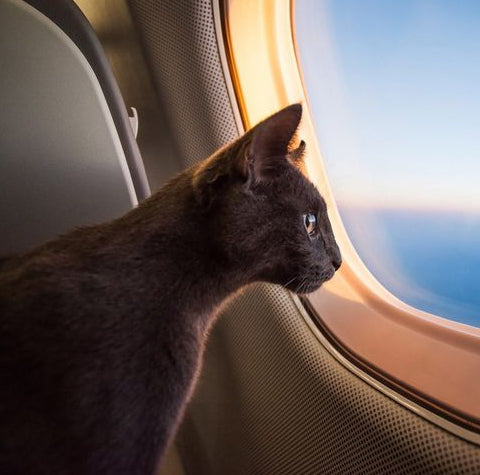Tips to Fly with a Pet on a Plane
Flying with a pet is not an easy thing, especially because different airlines have different pricing and rules. Aircrafts have a specialized cargo bay for animal transport that pressurises the same way the cabin does where passengers travel. Bringing your pet along means booking in advance and paying a fee determined by the airline. Most airlines allow a few dogs per flight, so make sure you and your pet get a seat.
Strict rules have been applied to travelers who wish to board the plane with their four-legged pet. The reasons are understandable: aviation is a serious risk for certain breeds of dogs, but there are also times when owners are unable to keep their dog under control during the flight, and the misuse of the so called assistance dogs skyrocketed.
Before someone decides to fly with a dog, there are certain things to be taken care of beforehand. Then comes the selection of airlines.
Cargo or carry-on?
Where your pet can travel depends on the animal’s size and weight and it certainly might be a factor whether you bring him along or not. These rules vary from airline to airline, so make sure to double check before you leave for the airport. Your pets will be more comfortable in the passenger cabin as a carry-on, and most airlines only allow this kind of travel.
If the pet is small enough to fit in the carrier under the seat in front of you, you two can travel together and the pet will be at ease as long as you are there. If, however, the pet is bigger and can’t fit into a carrier that fits under the seat, the pet has to travel with the luggage.
There is no harm in the cargo area, contrary to misconceptions, it is completely safe for pets, they will not drown or freeze, as it is an air-conditioned area. Note:
1. Covid-19 has made flying with pets more demanding, some airlines have temporarily suspended their pet transportation program.
2. Some airlines can refuse to board an animal - for his own safety. If the ground temperatures are not adequate, some breeds may not board the plane.
3. Before the trip check with the airline for further restrictions before you leave for the airport.
Before traveling
Veterinarians recommend that your dog follows a regular diet before, but should not be fed four hours before the flight. Also, make sure he doesn’t eat any new food before the flight so he doesn’t upset his stomach.
Veterinary examinations and mandatory vaccines for obtaining the dog’s passport are vital. You should try to tire your animal out as much as possible right before the trip so he could sleep as much as possible through the stressful flight.
To make sure your dog is all set to travel, make sure he is comfortable during travel. Pamper him with grooming, especially if your dog is furry, like a pomeranian or a similar breed. Clip your pet’s nails in advance. Trimming the nails is advised as opposed to declawing.
Nowadays , the administration of sedatives on animals is not necessarily recommended, but if you have some doubts about how your pet will endure the flight, you should always consult your vet. It’s essential you prepare for the trip so that you are comfortable with your decisions about where and how your pet is going to travel with you. It’s also essential to ensure the pet traveling with you is as safe as possible.
● Make sure he is properly fitted with a collar and a name plate.\
● Choose the right carrier for your dog - he should be able to stand and turn around in it comfortably.
● Make sure the carrier is durable and has plenty of ventilation and a leak proof bottom.
● Mark the carrier with the words ‘Live Animal’.
● Mark arrows on the carrier showing which way is up.
● Label the carrier with your information, for just in case.
● Attach a small bag of pet food to the carrier in case there is a delay in flight so the personnel can food the pet if it gets agitated.
Check out the International Air Transport Association's guidelines, for most airlines around the world follow this guideline.
Non-stop flight
The ideal would be to travel with no transfers during your flight. For your pet’s safety, try avoiding the holiday season, for there is less chance of something going wrong if airports are not crammed full of people.
Departure
If for some reason your pet is flying cargo, some airports require you to arrive at least 3 hours before departure for domestic, and 5 hours for international flights.
There are designated cargo drop-off locations.
If the pet is traveling with you as a carry-on, an agent will go through your pet’s paperwork. You’ll need to carry your dog in your arms to go through security while the carrier goes through the X-ray machine.
Destination
Make sure you check the animal importation laws of the country you’re traveling to. Many international destinations have long quarantine periods. Departing and arriving airports might not share the same policy of pet travel, so make sure you know where the pet relief area is at both airports.
When finally reunited on the ground, make sure the pet gets a good walk.
Fly safe!


